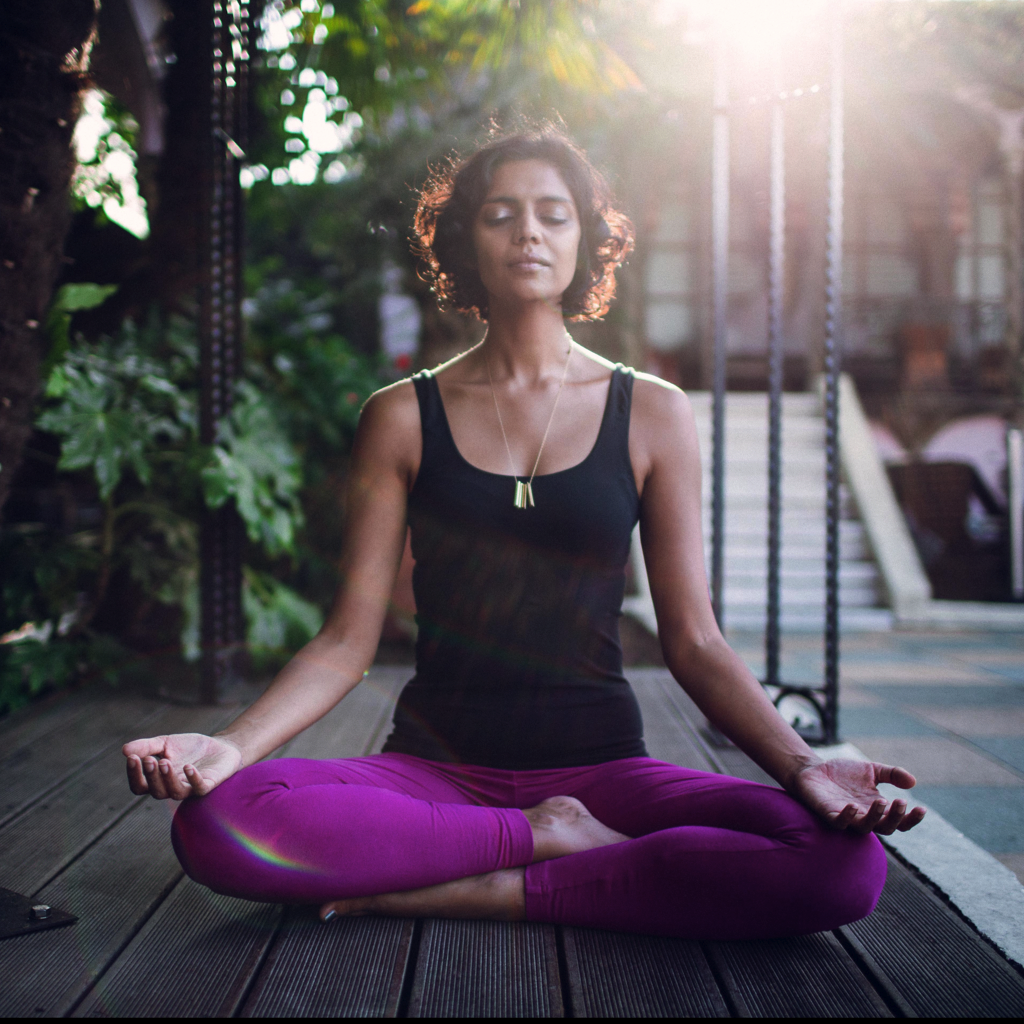Yoga is becoming increasingly more common and widely available in the West. It is not uncommon to find a yoga studio in nearly every neighborhood even in smaller, Midwestern towns far from the bustling fast-paced coastal cities like NYC, Los Angeles, and San Francisco. Not only are yoga studios becoming increasingly more common, but the yoga modalities available in many of these studios are incredible. It seems that today, there is a yoga class to fit just about anyone from any walk of life at any fitness level.
I am an avid studio hopper, never wanting to commit to just one studio. I would rather learn from as many talented instructors as possible, assimilating bits and pieces from the many branches of yoga taught in the West today. I sought yoga as a technique to integrate mind, body, and soul. My path to yoga was a very spiritual one, so I tend to gravitate toward modalities such as traditional hatha yoga, and kundalini which focus not only on the body, but calming the mind and nurturing the spirit.
But for those who are simply interested in the physical and health benefits that yoga can bring to one’s life, there are many options available as well.
Vinyasa is a style of yoga that was originally developed for children, who typically have more energy and would want a more fast-paced practice than older, more seasoned yogis. In a vinyasa practice, asanas, or postures, are linked rhythmically through the breath and are typically held for about five breaths. Vinyasa classes are great for those looking for something energizing and uplifiting and aren’t afraid to sweat. Look for classes titled “vinyasa,” “soft vinyasa,” “power vinyasa,” and “hatha flow” if this is a style of yoga that interests you.
Bikram yoga is quite the craze these days, at least that seems to be the case in my hometown. Bikram is a series of twenty-six postures done in a heated room, usually 95° to 105° F. Bikram classes are a cardio workout, and require strength, flexibility and focus on the part of the practitioner. Think practicing yoga in a sauna. Birkam is great for building strength and toning muscles, and is excellent for rehabilitation. In fact, the series was designed by Bikram Choudhury after a debilitating knee injury, which he was told he would never recover from and would likely never walk again. By practicing this series of asanas, he fully recovered from his injury in only six months. If you are interested in this style of yoga, look for a studio that offers “Bikram yoga” or “hot yoga.” The series can be practiced at home, but not every yoga studio will offer this style as the studio room must be heated.
Pre-natal and post-natal yoga are commonly offered as well. While some prenatal classes are merely “gentle” pregnancy yoga, other prenatal classes are focused on preparing a mother’s body for the stress and strain that giving birth will place on her. These classes focus on strengthening and helping the mother-to-be learn to calm and control the mind, as she will need to do during the birthing process. Postnatal and “Mommy and Baby” classes help a mother rebuild her body after giving birth, regain flexibility and muscle tone and can help alleviate the aches, pains, and stresses of new motherhood. Many classes integrate bonding time for mother and baby, and even stretching and massage for the little one. Such classes can serve as great support groups for the incredible life changes bringing a child into the world can have on one’s life.
Yin yoga is an offshoot of Taoist yoga as developed by Master Paulie Zink. Yin yoga focuses on stretching and building flexibility of the connective tissue and fascia found throughout our bodies, and surrounding the joints. Most hatha yoga practiced, especially in the West, in considered yang in nature – its focus lies in stretching and strengthening the muscles only. In a Yin yoga practice, asanas are held for extended periods of time, usually three to five minutes and up to fifteen minutes, and are centered primarily on opening the hips and releasing tension in the lower back (the very areas which most people suffer from tightness and soreness). Yin classes, although much slower paced, can leave the practitioner feeling invigorated and renewed. Attending a yin class is a great way to balance one’s yoga practice, and develop one’s meditation practice.
Gentle and restorative yoga classes are both excellent choices for anyone requiring a slower-paced class or recovering from illness or injury. These classes are great for those who would like to practice yoga but have limited strength, flexibility or range or motion. Such classes often use props such as blocks, bolsters, and blankets for support to facilitate practitioners in their ability to do different postures. Most classes will keep to beginner level poses.
I love yoga and encourage everyone I come in contact with to at least try it. I know it can be intimidating to look at a list of classes and not know where you fit in to the equation. Almost every studio offers beginner level classes, at the very least mixed-levels. A good yoga instructor will make you feel comfortable and welcome. Do not be afraid to ask questions, and be sure to tell your instructor of any injuries or physical limitations you may have. Don’t ever feel embarrassed about your abilities or level of knowledge. We are all on a personal journey, and go down our path at a different pace. Yoga is not about competition with yourself or your neighbor. It is about personal growth and development whether physical, mental, or spiritual.




